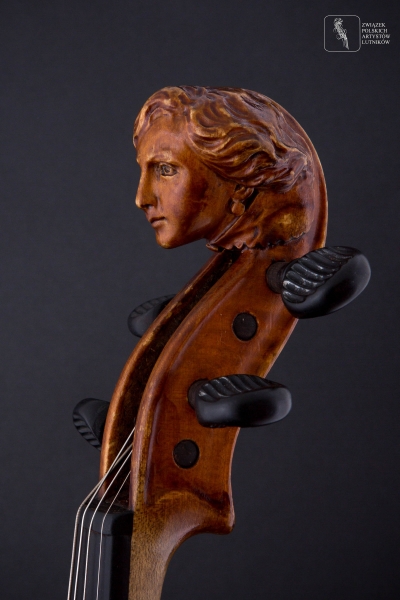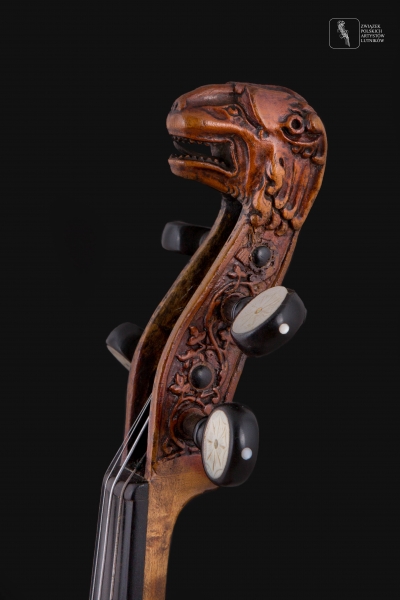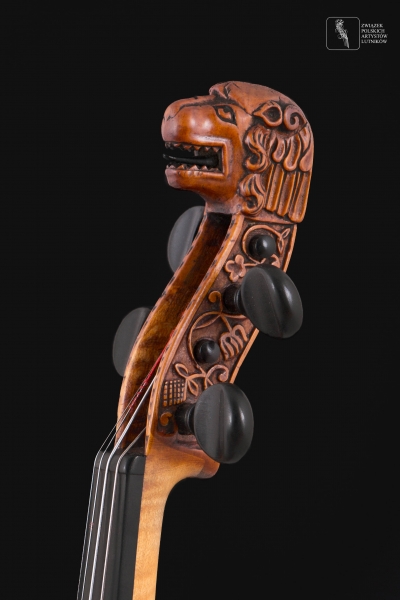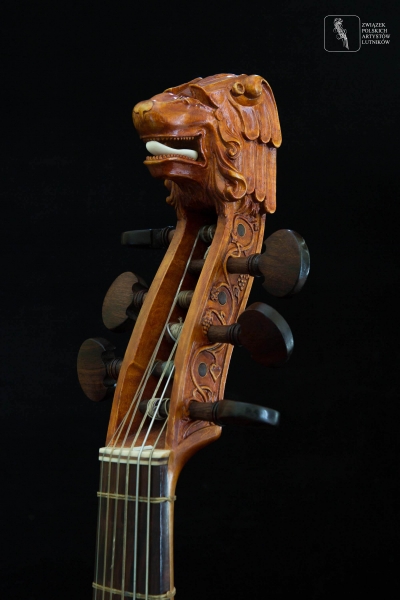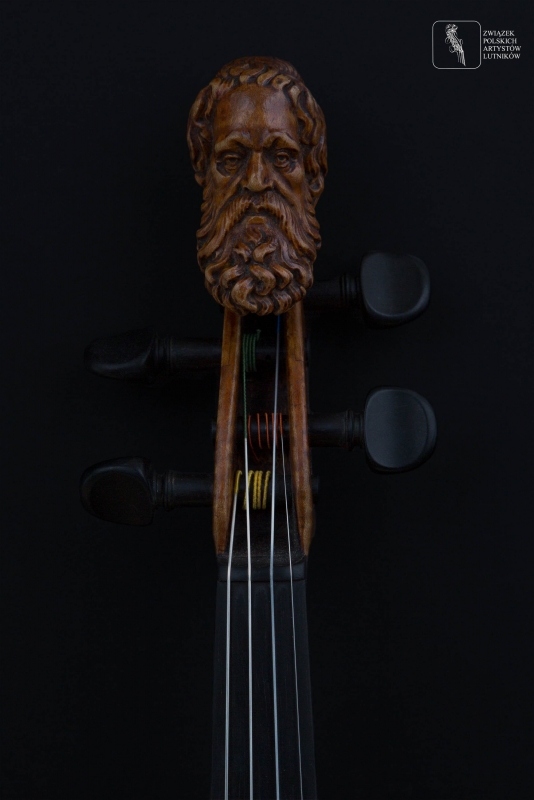About
The project was mounted by the Institute of Music and Dance in Warsaw in a year marking two major artistic events – the 13th International Henryk Wieniawski Violin Making Competition and the 15th International Henryk Wieniawski Violin Competition in Poznań. The online database showcases violins held in the Polish Ministry of Culture and National Heritage’s Collection of Violins administered by the Polish Union of Artist Violin Makers in Warsaw. Also featured are violins played by prominent Polish musicians as contestants of the Wieniawski competition, often at the onset of their careers, which today mostly belong to private collections around the world. We are deeply grateful to their owners for allowing us their use.
"As everyone is familiar with the violin family, there is no need to elaborate on it further," Michael Praetorius concisely concluded in his 1619 Syntagma musicum. Four hundred years later the assertion still holds, yet we all would not mind if Praetorius' 17th-century account was more comprehensive. For, when it comes to the violin, it is considered today as one of the most exquisite achievements of the art of lutherie. Its shape – developed centuries ago – is deemed so perfect that the rules and regulations of the Wieniawski violin making competition prohibit instruments whose form or colour diverge considerably from the accepted canon. Certain violins are subjects of legends; celebrated as vehicles of violinists' and luthiers' glittering careers, they fetch exorbitant sums at auctions. Many musicians approach their violin as a living organism, and everyone who has been in a lutherie workshop knows that violin making is much more than just a craft. Sadly, the memory of instruments – even those played by the best musicians – sometimes fades away. It is a great shame as many have a fascinating history: they change hands, are copied, falsified, rented, exchanged, stolen, sold, modified, damaged, repaired, witnessing many captivating stories in the process. We tend to remember excellent performances and stellar violinists but do we pay enough attention to the instruments they played?
Agata Mierzejewska
Gathered in one place, the photographs and catalogue cards of so many instruments are a valuable tool for comparing the construction of violins made in Poland and abroad from the 17th century up until the present, when we mainly use tried and tested, generally accepted models developed by old masters. The database also features violas, a double bass and a viola da gamba (viol) patterned after Groblicz's instruments.
The Polish Ministry of Culture and National Heritage's Collection of Violins holds numerous instruments awarded prizes at the International Henryk Wieniawski Violin Making Competition in Poznań. As the rules and regulations of the competition strictly prohibit any experimentation and unorthodox approaches in lutherie, the instruments are based on traditional models and devoid of any innovations regarding materials, construction, or appearance that are sometimes introduced by contemporary European luthiers.
Another type of instruments presented in our database are violins which were played at the International Henryk Wieniawski Violin Competition in Poznań. Polish contestants would sometimes be loaned instruments from the ministerial collection of violins, yet they mostly played private instruments. To track those we inquired among the prize-winners themselves, their families, students, other violinists, luthiers, and foreign foundations holding instrument collections.
Our database also offers its users a rare chance to listen to some of the objects on display. Alongside recordings made especially for the project at the headquarters of the Polish Union of Artist Violin Makers, the website contains recordings from the archives of the Wieniawski competition, listening to which you can immerse yourself in the incredible atmosphere of the event.
The catalogue cards of instruments held in the ministerial collection administered by the Polish Union of Artist Violin Makers feature selected information about the instruments' provenance, date of manufacture, inscriptions, size, and characteristics features of appearance and construction. The cards are based on documentation kept by the union, which in some cases we checked against relevant literature. Contemporary instruments (both those made by Polish luthiers and played by Polish prize-winners of the Wieniawski competition) are documented, while tracking the provenance of instruments dating one, two, or three centuries back is highly problematic. That is why, in some cases, a catalogue card states our assumptions as regards the workshop that produced the instrument or the school it belongs to, e.g. the Italian school. In the case of privately-owned instruments the database cites information obtained from the owners, foundations operating instrument lending programmes, or expert luthiers, after appropriate verification.
Ascertaining when a violin was made and by which luthier is a complex matter, often subject to doubts which are reflected in the instrument's documentation. Maker's labels attached to violins were sometimes falsified, especially those featuring famous Italian names, and should be approached with caution. On the other hand, a false label, uncertain attribution, or visible imperfections do not necessarily mean the instrument is of inferior quality – to the contrary, it may have a beautiful tone. Many instruments lack labels or inscriptions altogether, in which case attribution is based on luthiers' professional expertise. Consequently, instead of precise dates, many catalogue cards in the database refer to a quarter of a century or to a whole century. The provenance and dating of some of the most interesting instruments of the Polish school, attributed to the Grobliczes and Dankwarts, is still subject to laborious research covering both the luthiers' biographies and the instruments themselves. The information in the database reflects the latest, if not exhaustive, results of these inquiries, not previous hypotheses or dating. The catalogue cards cite the violins' sizes, including total length, which was not given in the Polish Union of Artist Violin Makers' documentation. The measurement includes the length of the pin, and may change as a result of maintenance works.
Joanna Gul
Along with the aristocratic piano, the more ludic violin is something of the Europeans’ invisible soul, which at some point made its way to the other side of the Atlantic, where it witnessed and participated in the birth of new nations, and is still present in many facets of local culture, both quotidian and festive. In Poland, the violin has been present since the beginning of time, or as some researchers say since its very "birth". It still accompanies traditional folk festivities. It also may be heard during private and public merrymaking unfolding to the tune of contemporary folk music, a genre only virtually connected with the traditional variety. Less present in everyday urban settings, it takes, along with the piano, central stage during concert hall performances of classical music. While the practice of playing the violin runs deep in our history, so does the ages-long tradition of making the instrument, once considered a craft, now regarded as an art. In the course of the last century, lutherie has risen to prominence in Poland, a clear sign of which was the founding of the Union of Polish Artist Violin Makers, establishment of lutherie courses at secondary and university level, and numerous national and international violin making and playing competitions (most importantly the Wieniawski Competition in Poznań) that take place in the country. The excellent work of Polish luthiers is known and appreciated around the globe. For this reason, we give you this website as a chance to look deep under a violin's surface and find out how these masterpieces are made.
Professor Benjamin Vogel
The creators
Concept of the project: Andrzej Kosowski, director of the Institute of Music and Dance in Warsaw
Coordinator: Brygida Błaszczyk-Podhajska
Curator: Agata Mierzejewska
Photographs: Waldemar Kielichowski
History of Lutherie in Europe; luthiers' biographies: Professor emeritus Benjamin Vogel
Catalogue cards based on the Polish Union of Artist Violin Makers' documentation, History of International Henryk Wieniawski Violin and Violin Making Competitions: Joanna Gul, Institute of Musicology, University of Wrocław
A Luthier's Workshop: Dr Stanisław Marduła
Studying Folk Violin Playing to Recover Early Music Performance Practices: Professor Zbigniew J. Przerembski, Institute of Musicology, University of Wrocław
Research on violins played by Polish prize-winners of the Wieniawski competition: Agata Mierzejewska
Translation of the Hornbostel and Sachs classification: Professor Beniamin Vogel, Joanna Gul
Translation of the website's content: Monika Tacikowska, Professor Beniamin Vogel
Blog editor: Agata Mierzejewska
Editor of the Education section: Brygida Błaszczyk-Podhajska
Website design and production: Studio Robot
The creators of the website would like to thank the following persons for their assistance in implementing the project:
Mr Marek Pielaszek, chairman of the Polish Union of Artist Violin Makers
Mr Axel Edling, chairman of the Järnåker Foundation
Mr Paul Barter
Ms Tanja Zocher of the Albert-Eckstein-Stiftung
Mr Tomasz Liebig
Ms Magdalena Wiśniewska of the Henryk Wieniawski Musical Society in Poznań
Mr Andrzej Ładomirski
Instruments:
Collection of Violins of the Polish Ministry of Culture and National Heritage administered by the Polish Union of Artist Violin Makers
Private collections
Albert-Eckstein-Stiftung
Järnåker Foundation
Musical Instrument Museum, a division of the National Museum in Poznań
Grażyna and Kiejstut Bacewicz Academy of Music in Łódź
Henryk Wieniawski School of Music in Łódź
Audio recordings:
Excerpts from the anthology "Laureaci Międzynarodowych Konkursów Skrzypcowych im. Henryka Wieniawskiego 1935-2001" [Prize-winners of the International Henryk Wieniawski Violin Competitions 1935–2001] released by the Henryk Wieniawski Musical Society in Poznań (2005), edited by Wioleta Wnorowska
Recordings of violins held in the Collection of Violins of the Polish Ministry of Culture and National Heritage: Katarzyna Denkiewicz, violin, Georg Philipp Telemann, 12 Fantasias for Solo Violin, recording and postproduction: Patrick Multan/Wiktorów Studio; selection of instruments for the recordings: Marek Pielaszek
Project financed by the Ministry of Culture and National Heritage of Poland
